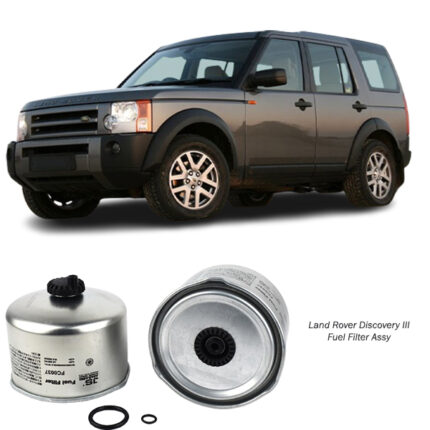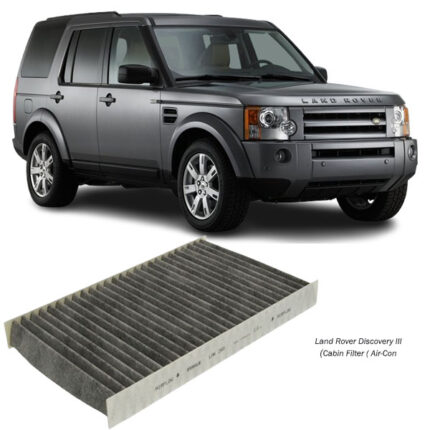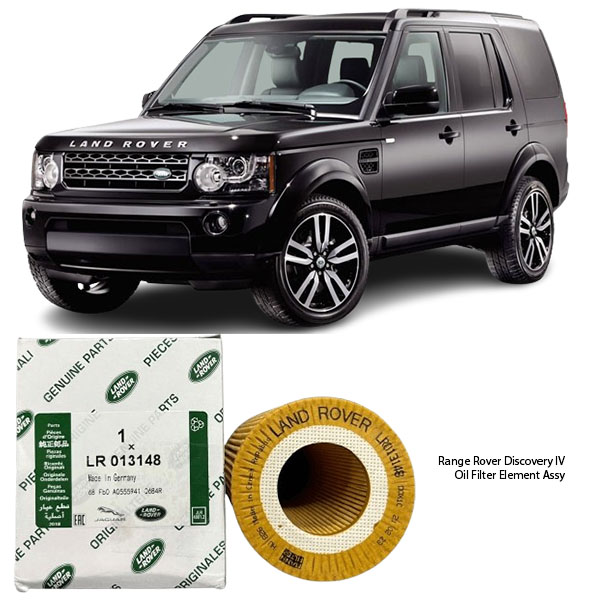-14%
Get Range Rover Discovery IV 3.0 TDV6 Oil Filter Assy LR013148 in Kenya
The oil filter assembly is one of the most critical components in a vehicle’s lubrication system, responsible for keeping the engine oil clean by trapping contaminants such as dirt, metal particles, and carbon deposits. A high-quality oil filter ensures proper oil circulation, prevents premature engine wear, and extends the engine’s lifespan.
In this detailed guide, we will explore the functions, benefits, types, symptoms of failure, and maintenance of the oil filter assembly to help you understand its importance in vehicle performance.
What is an Oil Filter Assembly?
An oil filter assembly consists of the oil filter element, housing (filter body), sealing gasket, anti-drain back valve, bypass valve, and end caps. It is installed within the engine’s lubrication system and is responsible for removing impurities from the oil before it reaches critical engine components.
Components of an Oil Filter Assembly
- Filter Media – The main filtration material, usually made of synthetic fiber, cellulose, or micro-glass, designed to trap contaminants.
- Anti-Drain Back Valve – Prevents oil from draining back into the sump when the engine is off, ensuring instant lubrication on startup.
- Bypass Valve – Opens if the filter becomes clogged, allowing oil to circulate to prevent engine starvation.
- Sealing Gasket – Ensures a tight fit between the filter and the engine block, preventing leaks.
- End Caps & Housing – Protect the filter element and maintain structural integrity.
Functions of an Oil Filter Assembly
1. Removes Contaminants from Engine Oil
Engine oil collects dirt, carbon, and metal debris from normal wear and tear. The oil filter traps these particles, ensuring clean lubrication and preventing damage.
2. Ensures Proper Oil Circulation
The filter maintains uninterrupted oil flow to all moving engine parts, reducing friction and preventing overheating.
3. Extends Engine Life
Clean oil reduces wear on pistons, bearings, crankshafts, and camshafts, leading to a longer-lasting engine.
4. Prevents Oil Degradation
By removing sludge and contaminants, the filter prevents oil from breaking down too quickly, maintaining its lubricating properties.
5. Protects Against Engine Wear & Tear
Contaminants in unfiltered oil can cause scratches, blockages, and deposits in the engine, leading to performance issues.
Types of Oil Filters
1. Full-Flow (Primary) Oil Filters
- The most common type in modern vehicles.
- Filters 100% of the engine oil before it circulates through the engine.
- Designed for efficient filtration with minimal flow restriction.
2. Bypass Oil Filters
- Provides extra filtration by cleaning a small portion of the oil at a time.
- Used in heavy-duty vehicles and trucks for extended engine life.
- Works alongside the primary filter for superior oil cleanliness.
3. Cartridge (Eco) Oil Filters
- Replaceable filter element without a metal housing.
- Environmentally friendly and easy to dispose of.
- Found in many European and high-end vehicles.
4. Spin-On Oil Filters
- Traditional self-contained filters with metal housing.
- Quick and easy to replace.
- Common in most gasoline and diesel vehicles.
5. Magnetic Oil Filters
- Uses a magnet to attract metal debris.
- Enhances protection against engine wear.
- Often used in high-performance applications.
Symptoms of a Failing or Clogged Oil Filter
1. Low Oil Pressure Warning
A clogged filter restricts oil flow, leading to low oil pressure, which can trigger a dashboard warning light.
2. Poor Engine Performance
Dirty oil can cause rough idling, sluggish acceleration, and increased engine noise.
3. Increased Engine Temperature
Restricted oil flow reduces lubrication, causing friction and overheating.
4. Dark, Dirty Oil
If your oil turns thick, dark, or gritty, it may indicate a clogged oil filter failing to remove contaminants.
5. Metallic Sounds from the Engine
Lack of lubrication causes tapping, knocking, or grinding noises, indicating excessive wear.
6. Oil Leaks or Drips Under the Car
A faulty oil filter seal or high oil pressure buildup can cause oil leaks around the filter housing.
Oil Filter Maintenance & Replacement
1. How Often Should You Replace an Oil Filter?
- Every oil change (5,000–10,000 km) depending on the vehicle and driving conditions.
- More frequently if driving in dusty, off-road, or extreme weather conditions.
- Synthetic oil users can extend filter life to 10,000–15,000 km.
2. Steps to Replace an Oil Filter (DIY Guide)
🔧 Tools Needed: New oil filter, oil filter wrench, drain pan, gloves, and new engine oil.
- Turn off the engine and let it cool.
- Lift the vehicle using a jack if necessary.
- Drain old engine oil into a pan by removing the drain plug.
- Remove the old oil filter using an oil filter wrench.
- Lubricate the rubber gasket on the new filter with fresh oil.
- Install the new filter and hand-tighten it securely.
- Refill with new oil and check the oil level.
- Start the engine and check for leaks.
Benefits of Regular Oil Filter Replacement
✅ Improved Engine Efficiency – Ensures smooth operation and optimal performance.
✅ Extended Engine Life – Reduces premature wear and tear on vital components.
✅ Better Fuel Economy – Clean oil reduces internal friction, improving fuel efficiency.
✅ Lower Emissions – Prevents oil sludge buildup, reducing harmful exhaust emissions.
✅ Cost Savings – Prevents costly engine repairs caused by contaminated oil.
Common Mistakes to Avoid
⚠ Using the Wrong Oil Filter – Always check your vehicle’s OEM specifications before purchasing.
⚠ Over-Tightening the Filter – Can damage the gasket and cause leaks.
⚠ Reusing an Old Gasket – Always replace the sealing gasket to prevent oil leaks.
⚠ Skipping Filter Replacement – Even if oil is changed, a clogged filter can still reduce performance.
⚠ Not Checking for Leaks – Always inspect the filter area after installation to ensure proper sealing.
Conclusion
The oil filter assembly is a small but essential component in engine maintenance, ensuring clean oil circulation, reduced engine wear, and improved efficiency. Regular oil filter replacements prevent damage, overheating, and costly repairs, making it one of the most cost-effective ways to extend engine life.
Follow us on Facebook for more parts.



